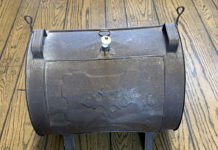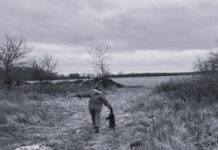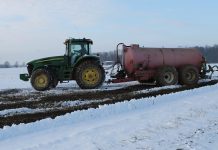August is the time Ohio producers should begin stockpiling feed for their animals winter needs.
Stockpiling means to accumulate forages that will be harvested by grazing livestock at a later time. It is a way to provide feed at a fraction of the cost compared to stored hay.
There are a variety of forages that may be used for stockpiling. However, current weather patterns in our area may not be conducive for such a practice this year.
Hot, dry. Extremely hot and dry sums it up quickly.
The weather conditions we have experienced this summer are similar to those we experienced in 2002.
The spring started off wet but then turned dry and very little rain has been received since May.
An occasional cloud burst has dumped rain on a few spots, but the neighbors down the road may not have received any measurable precipitation at all.
Slowing down. Regrowth of grass in pastures have been slowed by the lack of moisture and numerous days with temperatures in the 90s.
While some legumes continue to grow in these hot temperatures, most cool season grass growth slows down dramatically as temperatures climb into the mid-80s and higher.
Most pastures in our area look stressed and are being overgrazed by livestock.
Allowing this to continue results in pastures that will not respond quickly when rains and cooler weather does arrive.
Using meadows that have sufficient regrowth or feeding hay would be a better choice than allowing pastures to be grazed into the ground.
When this type continuous grazing occurs the root structure of the plants will be reduced dramatically resulting in a less healthy less vigorous plant.
Plants with small root systems cannot capture as much moisture or nutrients for growth.
Additionally, plants that are grazed very close to the ground have little if any leaf material left to catch sunlight and manufacture plant food through the process of photosynthesis.
The plant must regrow from root reserves until leaves are large enough to capture sufficient quantities of sunlight again.
Immediate options. So what are some immediate options to reduce pasture plant stress? What about grazing or chopping corn fields that are stunted or not doing well?
That may be an option, but there are potential problems when grazing drought stressed corn.
Nitrate poisoning can be a deadly problem.
Normally nitrates found in forages are eventually broken down to ammonia and used by microbes to form proteins in the rumen.
When high levels of nitrates are ingested, nitrite levels elevate in the blood and combine with hemoglobin. This causes less oxygen to be carried from the lungs to body tissues and the animals can suffocate.
Nitrate tests should be run before feeding drought-stressed corn to livestock.
Herbicides. Another item to be concerned about when thinking of grazing corn is what herbicide(s) were used.
Some products’ labeling would not permit livestock grazing after its use. You would have to check the product(s) you used to see if the forage could be grazed.
Other options. Producers who got their first-cutting hay off fields early had enough moisture left in the ground for decent regrowth of grasses and red clover.
That forage could be used while giving the pasture fields a rest.
Let the livestock do the work of harvesting your second cutting and leave the equipment sit.
To do this, fence livestock into meadows where water can be made available and allow the livestock to graze the grass and legumes until a 4- to 6-inch residual remains.
Hopefully you have electric fence, step-in posts, and livestock that are already adapted to this type of restraint system.
If not, different fencing methods may be warranted.
Moving livestock frequently (every one to two days) using small paddocks means more work, but a higher utilization rate of available forage (20 percent to 30 percent extra) may be worth the effort if you are running short of feed.
Concentrated feeding. Feeding hay and or grain concentrates is another option.
Pen the animals into a small sacrifice area and feed hay or hay and grain until the pastures have recovered.
If you have a place that needs extra fertilization, that area would be a good location to feed during this time.
It will be tempting to return livestock to the fields as soon as green growth begins, but it is critical that managers continue feeding hay, grain or other feed until adequate re-growth of the pasture accumulates (4 inches to 5 inches for bluegrass, 6 inches to 8 inches for fescue, 8 inches to 10 inches for most other grasses, or a quarter to a half bloom for most legumes) to allow the plants to store food.
After going through this drought/stress period, returning livestock to pastures and grazing too early will weaken the plants even more.
Timing. Timing of subsequent grazings may also become an issue as we approach fall and winter.
As we have said, plants need to have adequate time to regrow after a drought. The same is true after each grazing and before winter dormancy.
Pastures that do not get adequate rest before killing frosts will not green up as quickly the following year and production may be dramatically reduced.
So, if and when the forages start growing again, remember that management practices applied now will also affect next year’s grass production.
(The author is an Ohio State University Extension agriculture and natural resources extension educator in Monroe County, Ohio. Questions or comments can be sent in care of Farm and Dairy, P.O. Box 38, Salem OH 44460.)
Get 4 Weeks of Farm and Dairy Home Delivered












